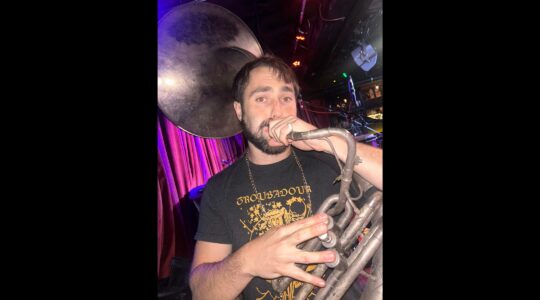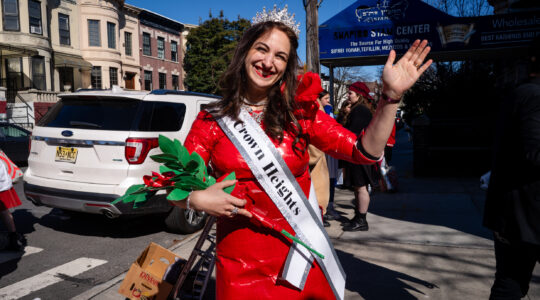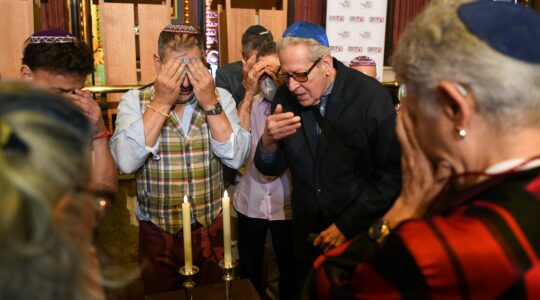Mass gatherings of Israeli youth known as "raves," may bring to mind a besotted Bacchanalia, but a proponent of the popular celebrations says present a spiritual side of Israeli life that can combat the negative images being broadcast from the region.
Tomer Ganihar – a photographer who has documented the raves he says he helped start a decade ago – has come to the United States on a mission: to show his generation of spiritual seekers as a continuation of a long, Jewish mystical tradition.
"After 5,000 years, it’s on again," says Ganihar, 32, a self-taught artist whose large-scale color images of raves in the Israeli wilderness and crowded clubs on Tel Aviv’s Allenby Street can be seen in "Holy Land X" – X as in "unknown – at Paul Rodgers/9W gallery in Chelsea.
"The Landscape is the same landscape, the people are the same people," says Ganihar. "Only the music has changed."
For Ganihar, clubs and outdoor raves and are the new synagogues where Jews can commune with a greater power, and the DJs who spin the repetitive electronic music called "Trance" are the new rabbis.
Ganihar traces his paternal roots back to one of the greatest rabbis, the Maharal of Prague, who according to legend created the Golem. Ganihar’s father immigrated to Israel as part of the Second Aliyah, changing the family name from Greenberg to a poetic equivalent in Hebrew.
A 6-foot-7 native of Ramat Hasharon – "the Jersey of Tel Aviv," he says – Ganihar was kicked out of photography class in high school because he was undisciplined. He went on in 1999 to become the youngest artist to exhibit at the Tel Aviv Museum of Art.
Ganihar uses long exposure times to capture the frenetic energy of vibrating bodies that gives some of his images an impressionistic feel. Others show young men and women dressed in loose clothing and seemingly lost in ecstatic reverie. Indeed, Ganihar acknowledges that drugs play a part in the rave scene, but he insists, "The real drug is the mystic enthusiasm."
An author and newspaper columnist in Israel, Ganihar claims to have been part of Israel’s first such gathering with about 10 friends, many of whom had recently returned from sojourns in India or a "summer of love" in Europe. The idea spread quickly, and today raves can attract up to 30,000 people and sometimes last four days, Ganihar says. He suggests that the gatherings offer an alternative to organized religion and an essential release for a spiritually hungry generation raised under pressure.
"My generation is restless," he says. "They lived all their youth in this crazy situation." After three years restrained by army discipline, "They’re fed up and they’re going out." He points to an image of a 1998 rave near an army memorial at Latrun as having a particularly "sci-fi" quality. Before the present intifada, "many Arabs participated," Ganihar says.
He emphasizes that the raves are "not just a party," rather they are tribal gatherings redrawn for a new era. "This is something very, very Israeli."
Holy Land X" is on view through Nov. 23 at Paul Rodgers/9W, 529 W. 20th St., 9th fl. (212) 414-9810. Tues.-Sat., 10 a.m.-6 p.m. They are shown with Uri Dotan’s "Crossing," a "video sculpture" that documents the kaleidoscopic movements of New York City traffic.
The New York Jewish Week brings you the stories behind the headlines, keeping you connected to Jewish life in New York. Help sustain the reporting you trust by donating today.




